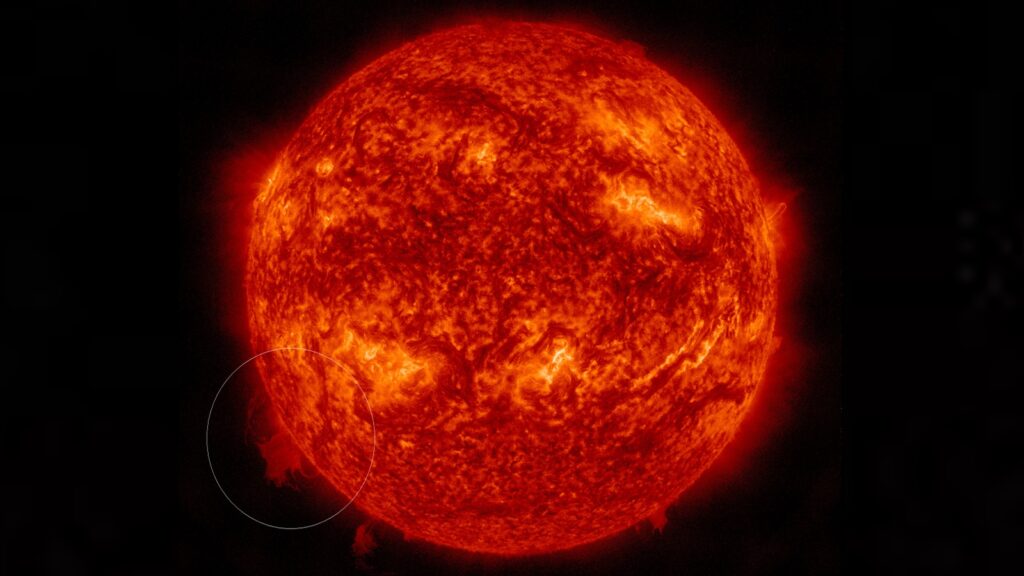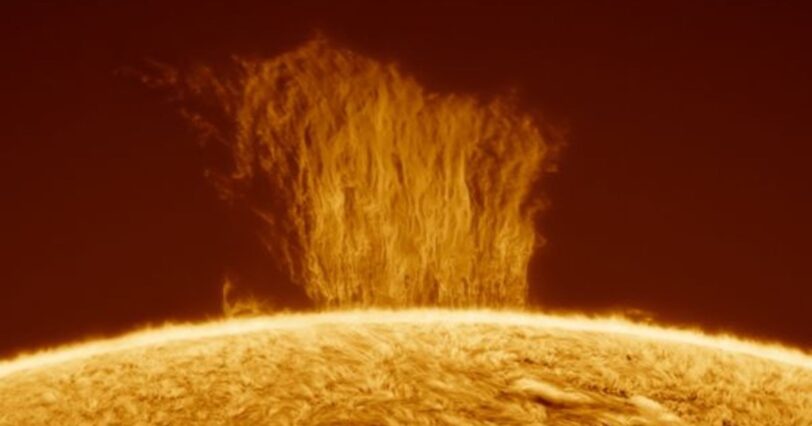An Argentine astrophotographer named Eduardo Schaberger Poupeau has taken an extraordinary photo of a huge plasma wall moving at incredible speeds towards the solar surface after being expelled near the sun’s south pole. Poupeau used specialized camera equipment to capture the “striking image” on March 9th, which showed the plasma wall rising around 100,000 km above the solar surface – equivalent to the height of eight stacked Earths.
The dazzling display is known as a polar crown prominence (PCP) and occurs when magnetic fields cause loops of ionized gas or plasma to be ejected from the sun’s surface, with PCPs occurring near the magnetic poles of the sun. NASA notes that the magnetic fields are much stronger at these poles, causing the plasma to collapse back towards the sun, giving the impression of a “plasma waterfall.”

Despite being contained within the magnetic field, the plasma falls at incredible speeds of up to 22,370 mph, much faster than scientists have calculated. A study published in 2021 revealed that PCPs have two phases – a slow phase where plasma gradually rises, and a fast phase where it accelerates towards its altitude peak. Further research is required to understand how the plasma falls back to the surface.
Solar physicists study solar prominences due to the potential threat of coronal mass ejections (CMEs) that can fully break away from the sun and collide with Earth. However, PCPs also attract nuclear physicists’ attention because the sun’s magnetic field seems to be adept at containing the plasma loops in polar regions, which could improve experimental nuclear fusion reactors. Although PCPs occur almost daily, pictures like the one taken by Poupeau are uncommon. As the sun moves towards its peak in the 11-year solar cycle, known as the solar maximum, PCPs could occur with greater frequency and intensity.
NASA noted similar plasma-related solar phenomena that occurred recently, such as the large solar prominence that broke away from the sun on February 2nd, 2023, and got stuck in a polar vortex for 8 hours. On September 5th, 2022, an undulating stream of plasma shot across the solar surface like a snake, and on September 24th, 2022, a one-million-mile-long plume of plasma erupted from the sun’s surface when another prominence snapped in half.
READ MORE: NASA captures a Tornado 14 times larger than Earth on the surface of the Sun. Here’s the video.


